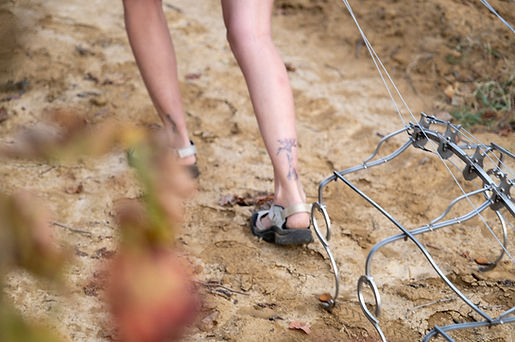Serra Bilgincan
Reptilia Cultivatus
2024
(Un)functional Sculpture, vest, helmet and assembling manual
Stainless steel, steel rope, polyester sling cloth tow rope, plaster, plastic, digital print
160 x 280 cm



Reptilia Cultivatus is an (un)functional sculpture conceived as both a speculative tool and a performance object. Referencing vineyard cultivators, it reflects on a contradiction within human intervention: cultivation is intended to loosen and aerate the soil, yet the act of tending the vines simultaneously compacts it, restricting its breath.
Worn as a vertebral extension, the piece stages the body as part of a larger system — neither purely human nor mechanical, but entwined with the soil it touches. As the wearer moves, the sculpture tills the ground, turning harm into restoration. In this way, the work reimagines productivity not as extraction, but as symbiosis.




